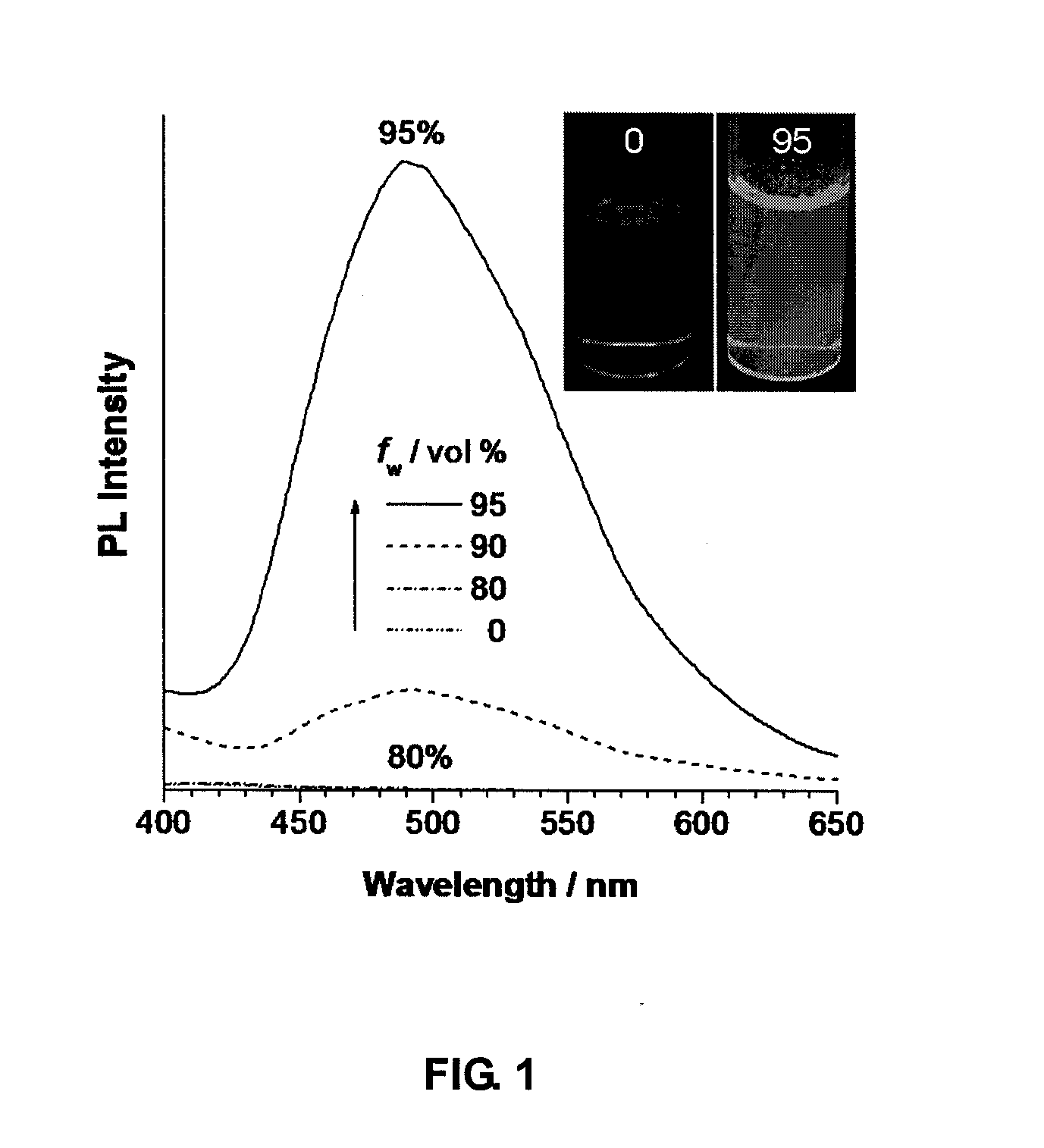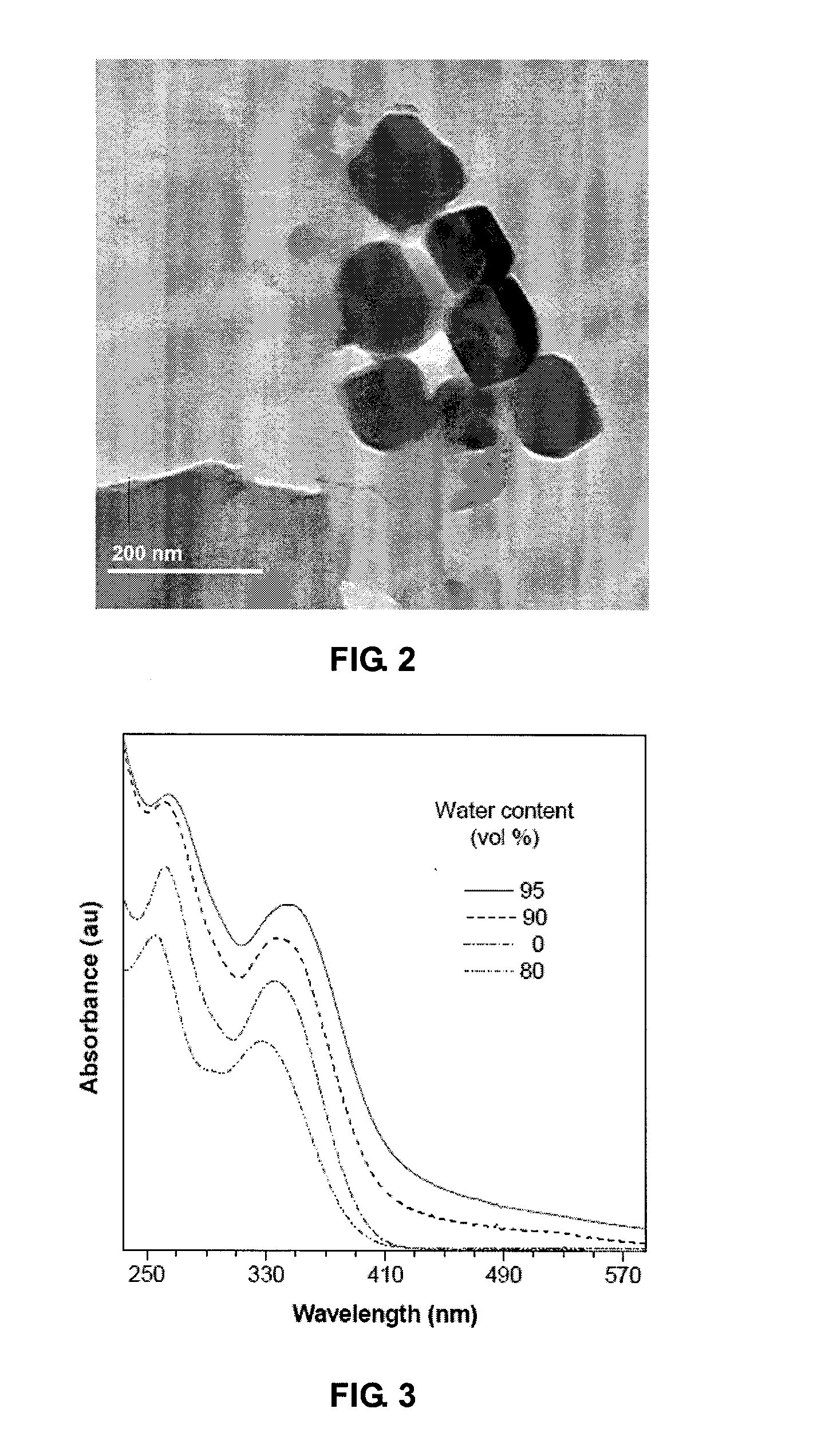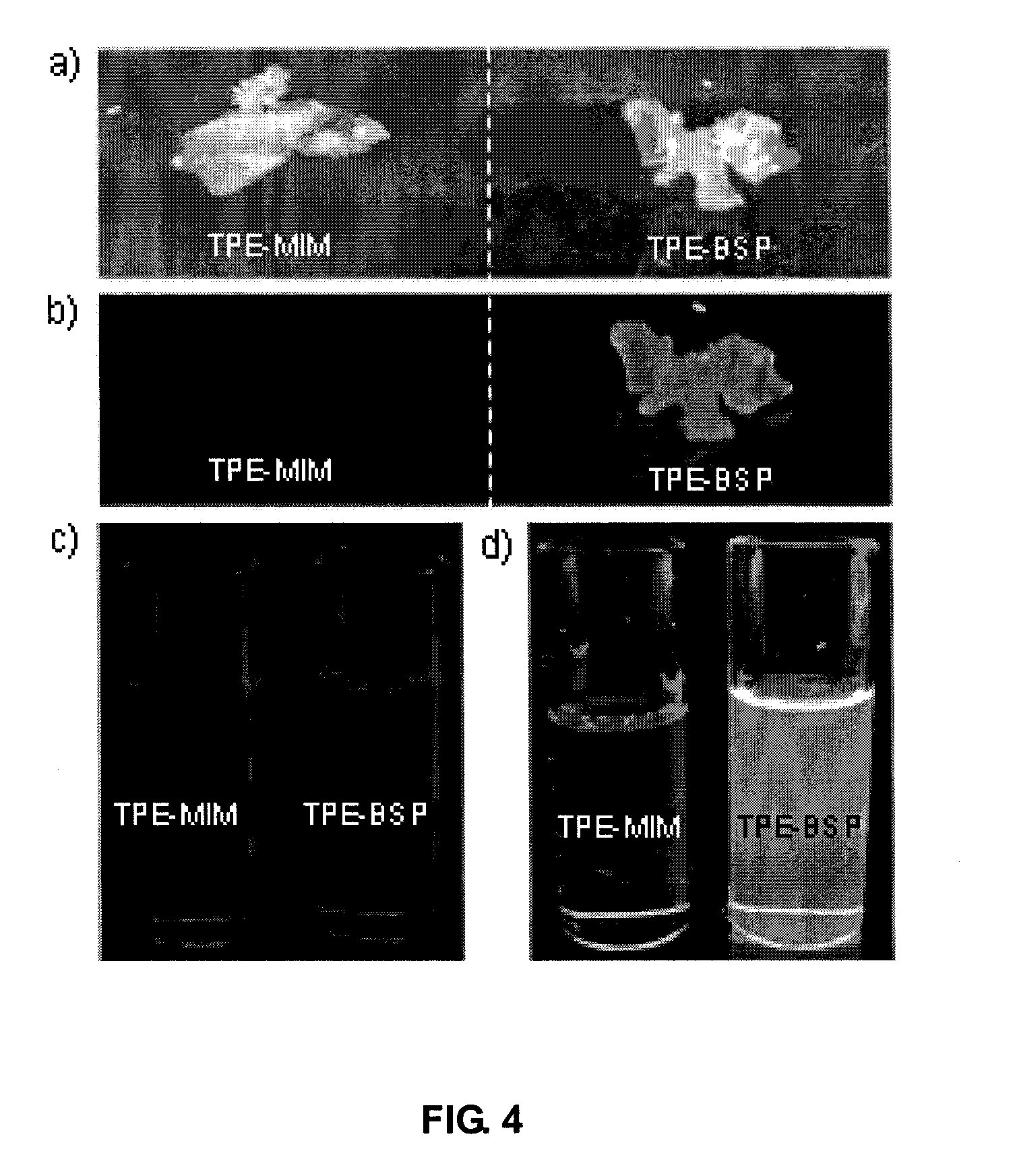Luminogen compounds and the use of the same for biosensing and cellular imaging
a technology of luminogen compounds and conjugates, which is applied in the field of conjugated luminogen compounds, can solve the problems of limiting the effective range of bioprobes, cellular dysfunction, and aggregation-caused quenching (acq) of their emissions in the solid state, and achieves rapid, sensitive and selective detection of thiols. high selectivity, the effect of high sensitivity
- Summary
- Abstract
- Description
- Claims
- Application Information
AI Technical Summary
Benefits of technology
Problems solved by technology
Method used
Image
Examples
example 1
1-(p-Aminophenyl)-2-(p-tolyly)-1,2-diphenylethylene (TPE-AM)
[0065]In a three-necked flask equipped with a magnetic stirrer were added zinc powder (3.4 g, 53 mmol) and 60 mL of THF. After the mixture was cooled to −5° C., TiCl4 (2.86 mL, 26 mmol) was slowly added by a syringe. The mixture was warmed to room temperature and stirred for 0.5 h and then heated to reflux for 2.5 h. A solution of 4-methylbenzophenone (1.29 g, 6.6 mmol) and 4-aminobenzophenone (1.302 g, 6.6 mmol) in 40 mL THF was added slowly. After complete addition, the reaction mixture was heated to reflux for 12 h. After cooling to room temperature, the reaction mixture was quenched with 10% K2CO3 aqueous solution and then extracted with dichloromethane. The organic layer was collected and concentrated. The crude product was purified by silica-gel chromatography to give a light yellow solid in 40% yield (0.96 g).
[0066]1HNMR (CDCl3, 300 MHz), δ (TMS, ppm): 2.24 and 2.27 (two singets, 3H), 3.57 (br, s, 2H), 6.40-6.45 (m, ...
example 2
1-[p-(N-Maleimido)phenyl]-2-(p-tolyl)-1,2-diphenylethylene (TPE-MI)
[0067]In a 10 mL round bottom flask, a solution of TPE-AM (0.181 g, 0.5 mmol) and maleic anhydride (0.98 g, 1 mmol) in 4 mL of THF was stirred at room temperature for 12 h. After solvent evaporation, a yellow solid of TPE-BM was obtained as an intermediate, which was directly used for further reaction without isolation and purification. Anhydrous sodium acetate (0.1 g) and acetic anhydride (10 mL) were added to the flask and the mixture was stirred at 75° C. for 6 h. After cooling the solution to 0° C., TPE-MI was precipitated out. A yellow solid was isolated in 89% yield.
[0068]1HNMR (CDCl3, 300 MHz) δ (TMS, ppm): 2.25 and 2.26 (two singets, 3H), 6.81 (d, 2H, J=2.4), 6.91 (d, 4H, J=4.0), 7.00-7.12 (m, 14H). 13CNMR (CDCl3, 100 MHz) δ (TMS, ppm): 21.28, 21.31, 124.96, 126.55, 126.74, 127.70, 127.81, 127.88, 128.48, 128.69, 129.36, 131.30, 131.43, 132.02, 134.26, 136.32, 136.50, 139.49, 140.42, 140.63, 141.82, 143.50, 1...
example 3
3-(Butylthio)-N-[4-(1,2-diphenyl-2-p-tolylvinyl)phenyl]pyrrolidine-2,5-dione (TPE-BSP)
[0069]To a solution of TPE-MI (30 mg, 0.068 mmol) in 3 mL of dry DMSO was added 110 μL of n-butylthiol (0.147 mmol). The resultant mixture was allowed to stir for 2 h at room temperature. A large amount (100 mL) of water was then added and the solution was extracted 4 times with 20 mL dichloromethane. The organic layers were combined, dried over magnesium sulfate, and removed under reduced pressure to give TPE-BSP in 89% yield (22 mg).
[0070]1HNMR (CDCl3, 300 MHz) δ (TMS, ppm): 0.90-0.96 (m, 3H, CH3), 1.38-1.49 (m, 2H, CH2), 1.56-1.68 (m, 2H, CH2), 2.25 and 2.26 (two singets, 3H), 2.59-2.68 (m, 1H), 2.75-2.85 (m, 1H), 2.90-3.00 (m, 1H), 3.20-3.31 (m, 1H), 3.79-3.84 (m, 1H), 6.91 (d, 4H, J=7.8), 7.00-7.12 (m, 14H). 13CNMR (CDCl3, 100 MHz) δ (TMS, ppm): 14.30, 21.90, 22.60, 31.70, 32.28, 36.80, 39.70, 125.99, 126.03, 127.15, 127.37, 128.28, 128.39, 128.44, 128.48, 129.05, 129.28, 130.26, 131.86, 132.0...
PUM
| Property | Measurement | Unit |
|---|---|---|
| concentrations | aaaaa | aaaaa |
| concentration | aaaaa | aaaaa |
| concentration | aaaaa | aaaaa |
Abstract
Description
Claims
Application Information
 Login to View More
Login to View More - R&D
- Intellectual Property
- Life Sciences
- Materials
- Tech Scout
- Unparalleled Data Quality
- Higher Quality Content
- 60% Fewer Hallucinations
Browse by: Latest US Patents, China's latest patents, Technical Efficacy Thesaurus, Application Domain, Technology Topic, Popular Technical Reports.
© 2025 PatSnap. All rights reserved.Legal|Privacy policy|Modern Slavery Act Transparency Statement|Sitemap|About US| Contact US: help@patsnap.com



